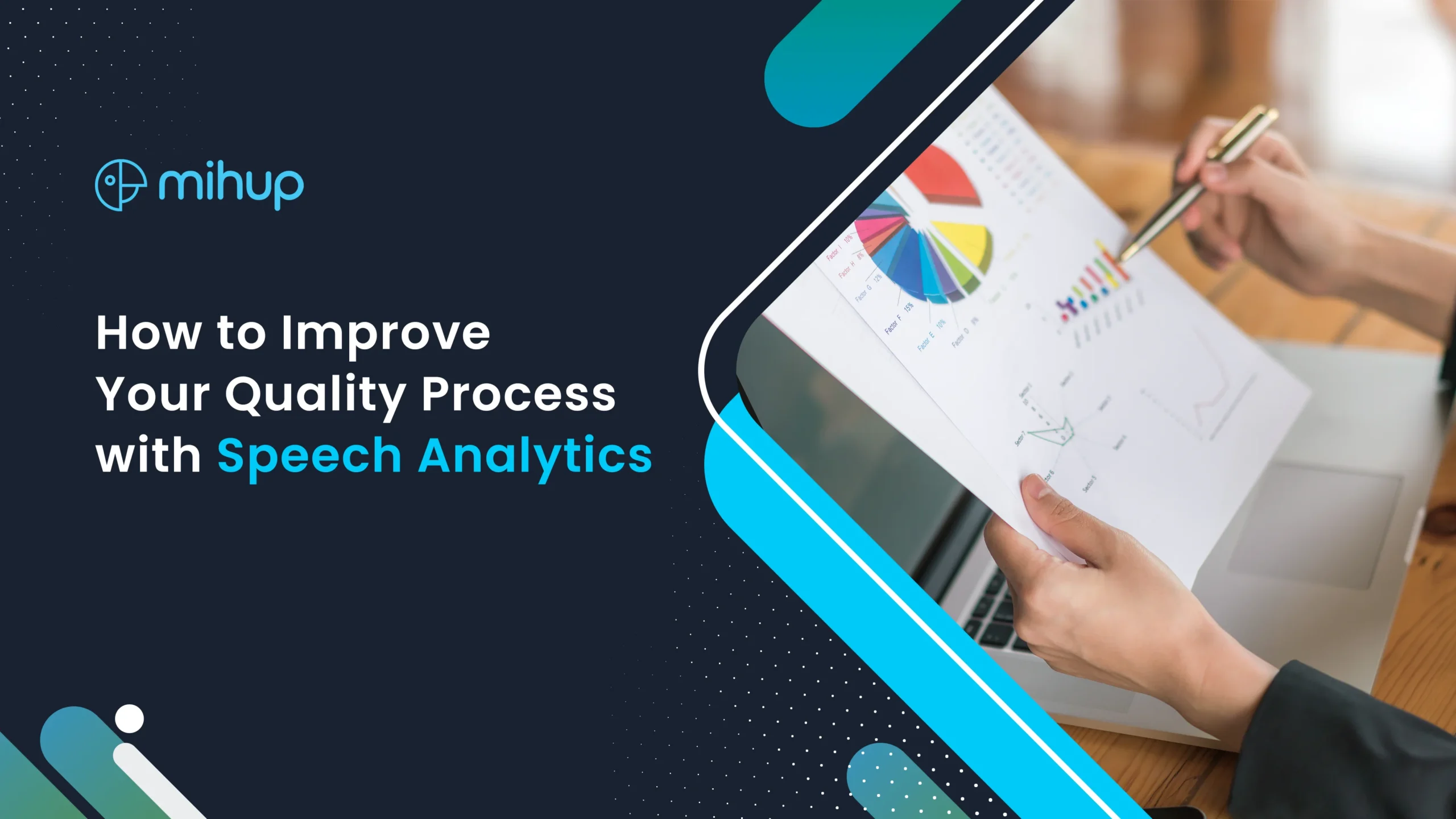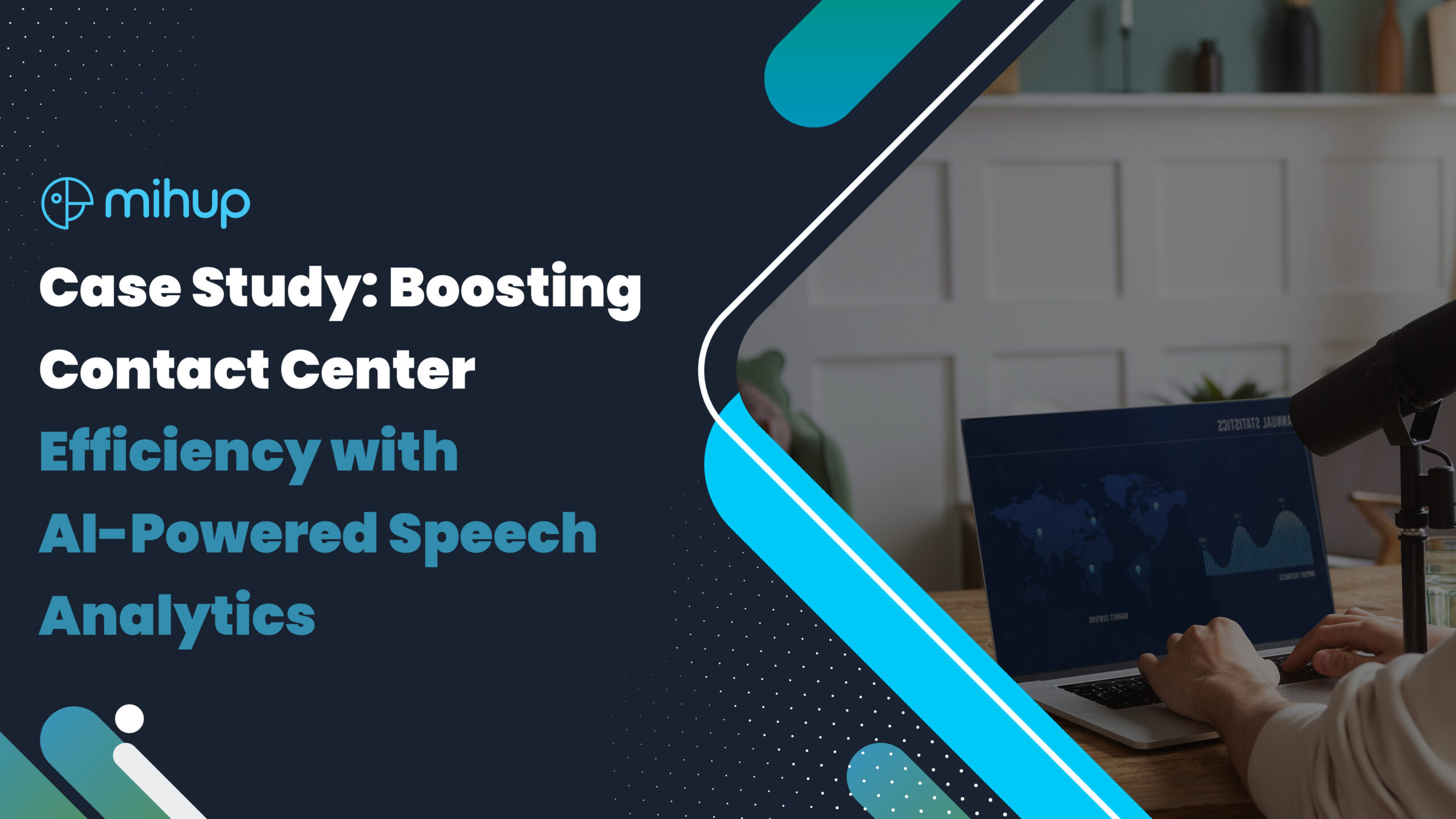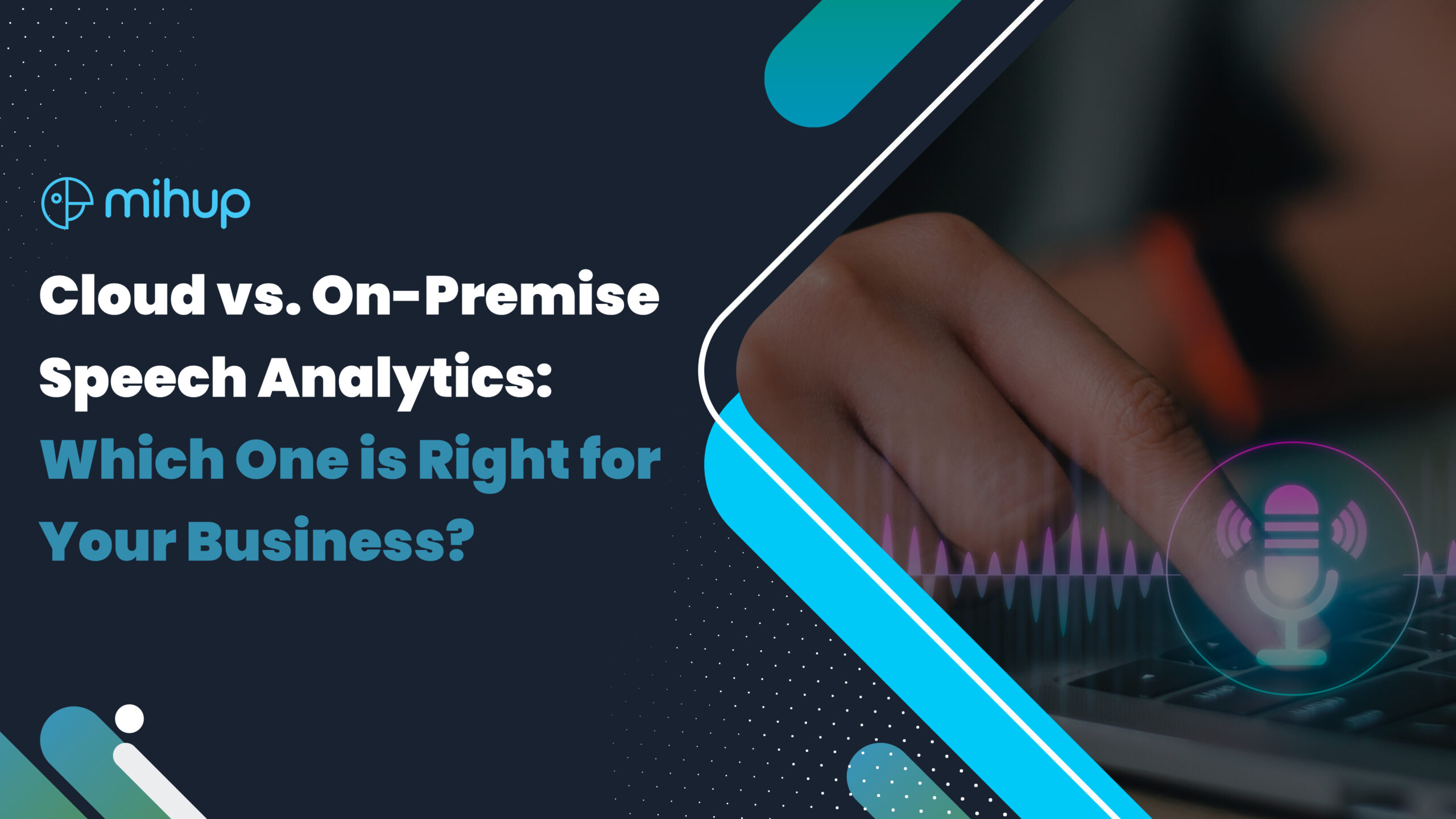Your customer contacts your contact center to report a billing problem, and after they experience a prolonged waiting period before finally connecting with an agent, they quickly realize that the agent is not able to provide a feasible solution for them.
As frustration mounts, the customer becomes angry and starts expressing their dissatisfaction loudly. The agent finds themselves unequipped to handle the escalating situation.
The customer escalates the matter further by making legal threats and vowing to publicize the issue on social media, potentially tarnishing your company’s image and reputation.
Fortunately, the implementation of speech analytics in the contact center can mitigate such scenarios and help the QA team to understand the AOIs for the agents by analyzing all calls and conversations with customers.
With real-time analysis, speech analytics enables agents to grasp the customer’s issue and generate relevant solutions. Furthermore, it facilitates 100% of post-conversation analysis to gain a deeper insight into the issues with each customer.
By leveraging speech analytics, contact centers can enhance productivity by up to 40% and empower agents to deliver improved performance.
What is speech analytics?
Speech analytics is a sophisticated technology employed by contact centers to gather, retain, and examine recorded call data. Its primary purpose is to leverage advanced algorithms and machine learning techniques to identify patterns, keywords, and significant data points within these conversations.
At its core, speech analytics involves the automated transcribing and indexing of recorded calls. The software then applies natural language processing (NLP) and machine learning algorithms to analyze the transcriptions. This enables contact centers to extract valuable insights from the conversations that take place between agents and customers.
By utilizing speech analytics, contact centers gain access to a powerful tool that provides deep understanding of customer behavior and preferences. These insights can be utilized to enhance operational efficiency and elevate the overall quality of service provided.
Leveraging the Power of Speech Analytics in Contact Centers
Speech analytics has become an essential tool in the contact center business due to its ability to provide valuable insights into customer interactions, leading to improved customer experience, operational efficiency, and business outcomes.
The most crucial use of Speech analytics is that it enables contact centers to gain insights into customer interactions, including customer sentiment, preferences, and pain points. This information helps contact centers to identify areas for improvement in agent behavior, call-handling processes, and overall customer service. By analyzing speech data, contact centers can make data-driven decisions to enhance customer experience and build customer loyalty.
Speech analytics also allows contact centers to monitor and analyze customer interactions in real-time or post-call to ensure quality assurance and compliance with regulatory requirements. It helps identify issues such as agent adherence to scripts, compliance with company policies, and regulatory guidelines. This helps contact centers to monitor agent performance and maintain compliance, mitigate risks, and avoid legal and financial penalties.
Speech analytics helps contact centers identify operational issues such as call handling times, first-call resolution rates, call volumes, and agent performance metrics. These insights allow contact centers to identify areas for improvement, optimize call center processes, and enhance operational efficiency. For example, identifying patterns of long call times can help contact centers to streamline call-handling processes, reduce wait times, and improve overall efficiency. This will improve the agent’s communication skills, call-handling techniques, and overall performance.
Benefits of speech analytics in contact centers
Here are a few key benefits of speech analytics:
- Customer Insights: Speech analytics allows contact centers to identify customer needs, preferences, and pain points by analyzing their conversations. It helps uncover patterns and trends in customer behavior, enabling contact center agents to better understand and address their customers’ requirements.
- Quality Assurance: By analyzing recorded calls, speech analytics software can identify specific phrases, keywords, or speech patterns that indicate positive or negative customer experiences. This allows contact centers to evaluate agent performance, provide targeted coaching, and improve overall service quality.
- Compliance Monitoring: Speech analytics technology helps contact centers ensure compliance with regulatory guidelines and internal policies. By analyzing conversations, the software can flag instances of non-compliance, such as inappropriate disclosures of sensitive information, and enable prompt corrective actions.
- Operational Efficiency: Speech analytics provides contact centers with actionable insights to optimize their operations. By identifying inefficiencies, bottlenecks, or recurring issues, contact centers can make data-driven decisions to streamline processes, reduce call handling time, and enhance overall productivity.
- Proactive Issue Resolution: By detecting emerging trends or issues in customer conversations, speech analytics enables contact centers to address them proactively. This empowers organizations to take prompt action, make necessary adjustments, and mitigate potential problems before they escalate, thereby improving customer satisfaction and loyalty.
Overall, speech analytics acts as a secret weapon for contact centers, equipping them with a comprehensive understanding of customer interactions. By leveraging this technology, contact centers can drive improvements across various aspects of their operations, leading to enhanced customer experiences and ultimately, business success.
Overcoming Challenges in implementing contact center speech analytics
Implementing speech analytics in contact centers can present a range of common challenges. Let’s delve deeper into these challenges and explore potential solutions:
- Technical Understanding Gaps
Selecting the right speech analytics tool and ensuring proper setup can be intricate. It requires understanding the technical aspects and functionalities of the software. Opting for a user-friendly speech analytics solution that offers a customizable agent dashboard, highly accurate transcription capabilities, and reliable customer support can be helpful. Look for vendors that provide comprehensive training and documentation. Consider establishing an internal team with the necessary technical expertise to facilitate a smooth implementation process and handle any technical challenges that may arise.
- Data Quality Issues
Speech analytics relies on high-quality data for accurate analysis. Inconsistent or incomplete data can result in misleading insights. Contact centers should establish data validation rules to ensure data accuracy. Conduct regular data cleansing to eliminate inconsistencies and errors. Implement data quality checks to identify and rectify any issues. It’s crucial to maintain robust data management practices and ensure that data collected for analysis is reliable and of high quality.
- Data Misinterpretation
The volume of data generated by speech analytics can be overwhelming, making it challenging to extract meaningful insights. Automation of reports and dashboards can help streamline the analysis process. Implement tools that can identify key metrics and trends automatically. Collaborate with the speech analytics vendor to develop customized reports tailored to specific business areas, enabling deeper insights. Visualization techniques, such as charts and graphs, can also aid in interpreting and understanding the data more effectively.
- Privacy Concerns
Customer calls often contain sensitive and private information, requiring stringent data security measures. Choose speech analytics vendors that prioritize data protection and offer robust security features. Ensure the software supports data encryption and secure data storage. Role-based access control should be implemented to restrict data access to authorized personnel only. Adhere to data privacy regulations, such as GDPR and CCPA, to safeguard customer data and maintain compliance.
- Integration with Existing Tech Stack:
Integrating speech analytics tools with legacy or older contact center systems can be complex and may require compatibility considerations. Prioritize compatibility and integration capabilities when selecting a speech analytics tool. Work closely with the vendor to understand the requirements and potential challenges. Leverage their expertise to facilitate smooth integration with existing contact center systems. It may involve customized configurations or the use of middleware to bridge any compatibility gaps. Thorough testing and collaboration with IT teams are vital to ensure a seamless integration process.
By recognizing and addressing these challenges proactively, contact centers can successfully implement speech analytics and harness its transformative potential to enhance operational efficiency, improve customer experiences, and drive business success.





